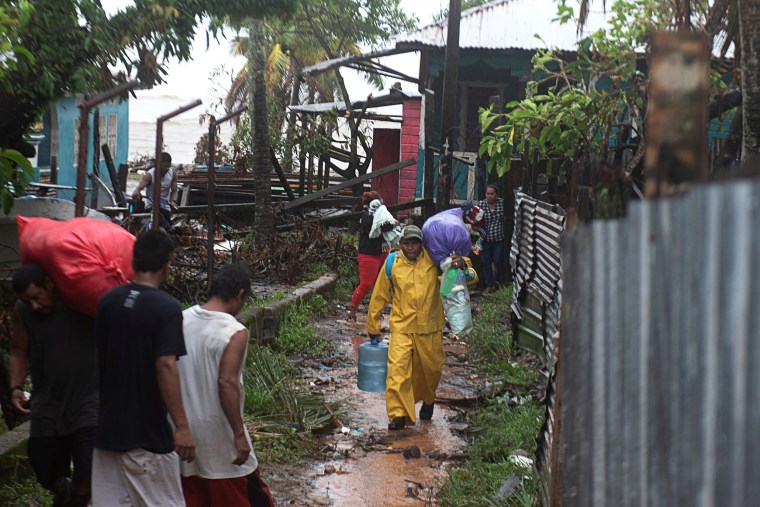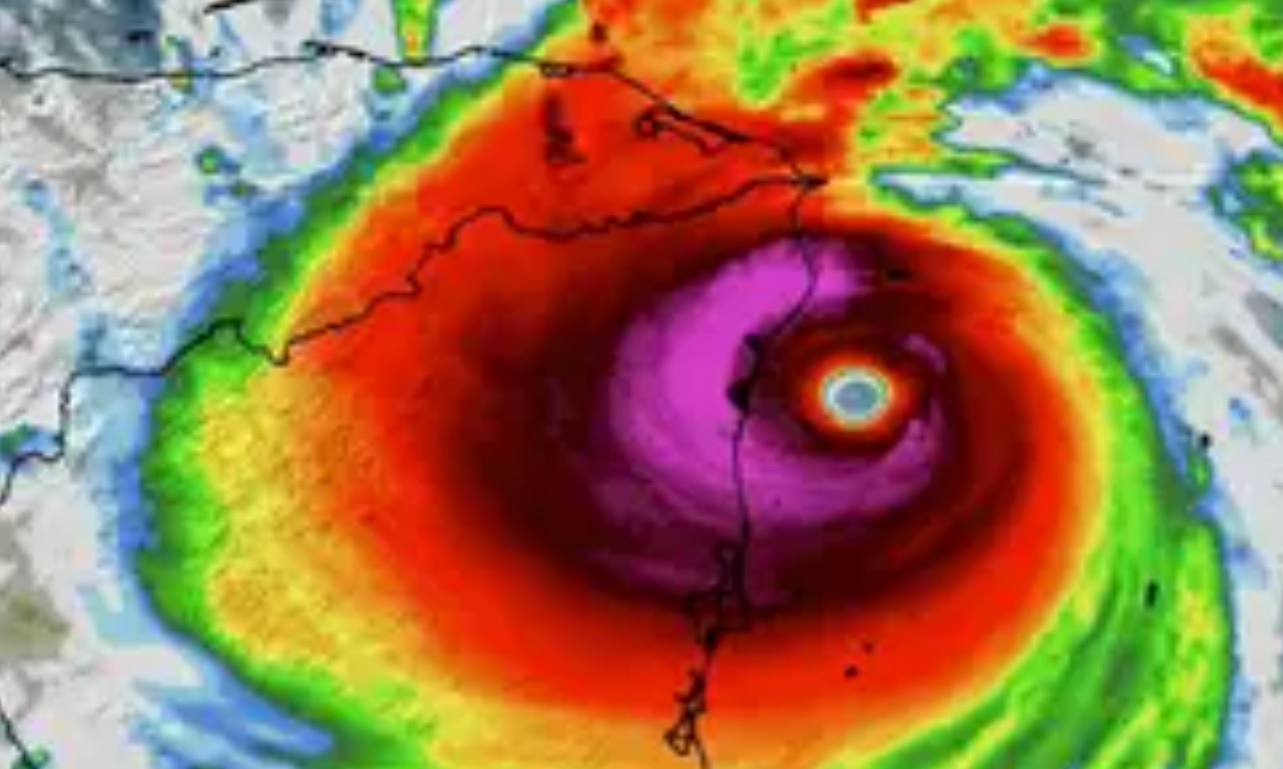This is strike two for Honduras and Nicaragua. Iota made landfall in Nicaragua on Monday night as a powerful and “extremely dangerous” Category 4 hurricane, bringing with it catastrophic winds and life-threatening storm surge, forecasters said. A very familiar scenario when Hurricanes Irma and Maria hit Puerto Rico over a week apart and left the Caribbean island in nearly complete devastation.
The hurricane, which had slightly weakened from earlier in the day, had maximum sustained winds of 155 mph and made landfall about 10:40 p.m. on the northeastern coast near the town of Haulover, about 15 miles south of where Category 4 Hurricane Eta hit just two weeks ago, the National Hurricane Center said.
While meteorologists earlier Monday hustled to put the rarity of Iota’s strength for November into perspective after it became a Category 5, it became clear that an imminent humanitarian catastrophe was likely coming for Nicaragua and Honduras.
Those locations are still reeling after Hurricane Eta made landfall Nov. 3, causing loss of life and extreme destruction of property.

The effects expected from hurricane Iota won’t be just life-threatening, but in many cases also unsurvivable for anyone without proper shelter.
Rainfall of up to 30 inches will result in deadly flash flooding, landslides, mudslides and river flooding.
The winds will be catastrophic with wind gusts approaching 200 mph in some locations.
All of that combined will lead to parts of the region becoming uninhabitable for weeks, if not months.
Hurricane Iota’s maximum sustained winds at landfall was 155 mph, and a Category 5 is for storms with 157 mph winds or greater.
Over the weekend, Iota exploded into a powerful hurricane when it became the 10th tropical cyclone this season to undergo rapid intensification. In just six hours, it strengthened by 40 mph. The definition of rapid intensification is an increase of 35 mph in 24 hours.
That is unprecedented for November. While “extraordinary,” “ferocious” and “gut-wrenching” are all words that would be used for a Category 5 hitting anywhere, the fact that it is mid-November makes Iota’s evolution unparalleled.

In fact, the second half of this record-shattering season has featured more strong hurricanes. According to Phil Klotzbach, a meteorologist at Colorado State University who studies hurricanes, “The first 24 named storms of the 2020 Atlantic hurricane season produced 2 major hurricanes (Laura and Teddy). The last 6 named storms have produced 4 major hurricanes (Delta, Epsilon, Eta and Iota).”
In other words, the worst of this season has occurred after August and September, which are considered the climatological peak months of the Atlantic hurricane season.
Then again, nothing about this season has been normal, with 30 named storms, which broke the previous record of 28 storms set in 2005.
Iota’s reaching Category 5 status makes 2020 the fifth year in a row to have a Category 5 hurricane, another record.
Climate change can be credited with producing more rapidly intensifying hurricanes like Iota (and Laura, Sally and Eta) that strengthen right up to landfall. Warming waters over time will lead not only to stronger hurricanes, but also to ones that will last later into the season.

COMMENTS